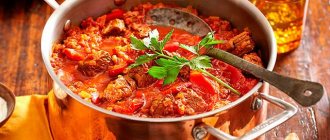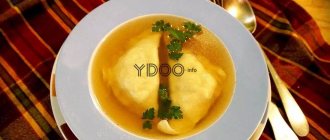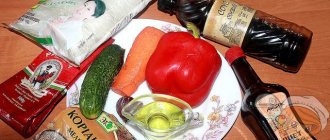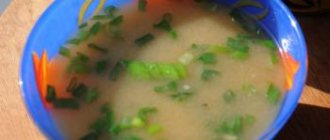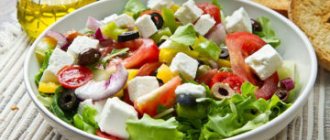5 dishes you need to try in the Netherlands
It was from here that Peter I “brought” the famous lightly salted herring (Haring) with potatoes, which is now for some reason considered a Russian dish.
- Pickled herring (Gibbing). A unique symbol of the Netherlands. A classic dish of freshly pickled herring with onions and gherkins
- Stamppot. Mashed potatoes with kale, carrots, chicory, sauerkraut. Served with sausages
- Hutspot. Meat stew with boiled potatoes, carrots, onions
- Pea soup (Snert). Thick traditional soup with celery, leeks, carrots, pork. Served with smoked sausages and rye bread
- Poffertjes. Dutch pancakes based on buckwheat flour and yeast
With our guide, you can safely go on a New Year's trip to European countries and taste the most famous national dishes. To help you, we also offer our article dedicated to seven European countries with the best Michelin restaurants. Happy and delicious travels!
Main characteristics of European cuisine
European cuisine is the most widespread today throughout the world. And it’s not surprising, because it includes the most popular, best dishes not of just one country, but of all of Europe - France, England, Italy, Belgium, Germany, Austria and others. And that is why restaurants offering European cuisine are deservedly popular, because in them you can take a whole trip around Europe, even if it’s a gastronomic one, without leaving the table. In one restaurant you can try cream of champignon soup from France or goulash, originally from Hungary, for the first course, and schnitzel, whose homeland is Germany, for the second, and Italian tiramisu or Spanish tortilla for dessert.
Historically, it so happened that modern European cuisine has absorbed the national characteristics of various European countries. And, nevertheless, it is impossible to talk about a single European cuisine, since many different peoples inhabit the territory of Europe, and climatic and geographical conditions determine the life and cuisine of each of them. The cuisine of the southern countries of Western Europe differs in “temperament” from the cuisine of its northern countries, just as the character of Italians or Spaniards differs from the Finns. Southern cuisine is distinguished by its spiciness, color, and aroma; the cuisine of the north will be more restrained and simple. A feature of European cuisine is the use of sauces and a large number of vegetable dishes. Europeans, unlike eastern peoples, use much less seasonings, spices and all kinds of spices in order to preserve the taste of the products themselves.
European cuisine originated in Greece. Greek cuisine is characterized by the use of olive oil, raisins, lemons, tomatoes, walnuts, large amounts of garlic and spices, and the presence of fish and fatty dishes.
The culinary art from Greece, together with the chefs, migrated to Ancient Rome, and therefore Italian and Greek cuisine today have quite a lot in common. Italy is recognized as the cradle of European culinary excellence. In general, the cuisines of Portugal, Italy, France and Spain have common features. First of all, this is the use of all types of pepper, fennel, ginger, sage, thyme, tarragon, vanilla, cinnamon. Vegetables are always present: sweet peppers, tomatoes, cucumbers and fruits: oranges, grapes, figs. There are many seafood and fish dishes, as well as beef, lamb, pork and poultry.
But not only southern European countries can be called the trendsetters of European cuisine. Thus, the fashion for coffee spread from Austria across Europe. Belgium, Germany and the Czech Republic introduced Europeans to beer. The love for tea came from England.
European cuisines vary markedly depending on the country, region - living conditions, cultural traditions and food preferences - however, they are united by “European”, continental origin. Despite the differences, what is common to European cuisine is the abundance of meat and vegetable dishes, as well as the secondary role of various seasonings and sauces in cooking (due to the characteristic desire to preserve the true taste of the ingredients), and the abundance of products using wheat flour. In addition, often before consuming a particular dish, an “aperitif” is consumed - high-quality alcoholic drinks that increase appetite and improve digestion. Eggs are widely used in European cuisine - fried, boiled, as one of the ingredients in flour dishes, and even as a base for some drinks. Over the centuries, integration processes have been observed - during which dishes from various European cuisines find approval and fans in countries characterized by different cuisine traditions. Conventionally, European cuisine can be divided into Eastern European, Northern European, Southern European and Western European.
European cuisine differs from eastern cuisine in a significantly smaller amount of spices and seasonings. Europeans strive to preserve the taste of each component. According to doctors, European cuisine is much healthier than Eastern cuisine. In oriental cuisine, food is fried in various sauces, and this changes the taste of the product and makes it unhealthy.
In Europe, food is natural and light. The sauce is not the basis of the dish, but simply one of the components. There are a lot of sauces. One of the main components of European cooking is French. There are more than 3,000 sauces in this kitchen, they contain all the zest, soul and pride of the chefs. French cuisine has had a very big influence on European cuisine in general - the use of exquisite sauces that give dishes a unique taste. Also originating from France is the use of alcoholic beverages (champagne, wine, cognac and liqueurs) in preparation; a variety of delicacies such as cream soups, various types of cheese, oysters and, of course, a love of salads. A feature of European cuisine is the use of a large number of vegetables. The most important difference between European cuisine is European standards in cooking. This is the naturalness and freshness of the products, the absence of chemical additives. Europeans also take care of their health through food - without excess fat, with healthy natural seasonings.
Austria gave the world morning coffee. Austrian coffee shops were the first and, following their example, modern European cafes opened later. Italy is, of course, pizza and pasta, which have also taken a strong place in European cuisine. England contributed with roast beef and steak, and one of its directions (Yokshire cuisine) shared puffed pudding with the world. Goulash is a dish of meat (pork, beef, lamb) with the addition of paprika and flour, originally from Hungary. It is something between a thick soup and a stew. Appetizers and main courses, the preparation of which involves various sausages, frankfurters and sausages, came to European cuisine from Germany. Chocolate, cheese fondue and Swiss roll are Swiss contributions.
Another characteristic feature of European cuisine is a large number of baked or fried meat dishes: roast beef, escalopes, steaks, splints, entrecotes, schnitzels... The list can be continued for a very long time. Vegetables, cereals and a variety of flour products (vermicelli, pasta, noodles) are most often used as a side dish. Various meat (with ham, sausages) and sweet (with jam) sandwiches are also not forgotten in European cuisine. Gourmets prefer to wash down their main course with wine or beer. The main dish is served with a side dish of vegetables or flour products. They prefer to wash down sweets with hot coffee or tea.
Also characteristic and famous dishes of European cuisine that cannot be ignored are dishes cooked on coals with spicy tomato sauce (barbecue); chilled soup of tomatoes, cucumbers, peppers with the addition of vinegar, garlic and olive oil from Italy (gazpacho); thick pasta stuffed with minced chicken, meat or mushrooms (cannelloni); thin, translucent pieces of raw beef fillet with marinade or sauce (carpaccio), thick vegetable soup with pasta (minestrone).
When serving dishes of European cuisine, it is also important to set the table itself with indispensable attributes - cutlery (spoons, forks and knives) and napkins.
Travel around Europe!
European cuisine in pictures is ruddy, fluffy pies with fillings and the thinnest pizza with red slices of tomatoes. This is a thick juicy piece of crispy meat and thin frog legs. This is the legendary Caesar and the no less famous borscht.
Modern European cuisine, despite its popularity, unfortunately, has absorbed only the “tops”. Recipes of European restaurants are unified and of the same type. Meanwhile, leafing through the cookbooks of the peoples of Europe is a fascinating activity. It’s interesting to study photos and menus of European cuisine, learn the history of recipes, and try new combinations of flavors. And, of course, it’s worth making culinary trips to different parts of Europe from your kitchen again and again.
Main dishes and the best products of Europe
What dishes are included in European cuisine? The most famous and best dishes of European cuisine are prepared from meat, usually beef. The cult of meat is associated with the inaccessibility and high cost of this product. A European feature is the method of cooking meat over an open fire, with sauce and marinade. Meat is traditionally served with side dishes of fresh and stewed vegetables, cereals, and flour products.
The first dishes of European cuisine - soups - are still mandatory on the table of any European today.
Recipes differ in different parts of the mainland: thick bean soup, refreshing cold gazpacho, rich chicken broth, fish soup. But the very fact of European love for soups is explained by the historical settledness of peoples, attachment to their hearth and their fields. It is not surprising that farming features have enriched our table with dishes made from eggs, poultry, and dairy products.
A separate chapter in the continental cookbook is salads of European cuisine. The popularity and variety of salads is explained, firstly, by a passion for natural products, healthy eating, harmonious combinations, and secondly, by the abundance of sauces that European chefs owe to the French. Salad recipes in European cuisine are based on vegetables and herbs, often adding fish, cheeses, flour products (pasta, crackers), and legumes.
Residents of the European part of the world have a reverent attitude towards desserts. Not a single holiday is complete without dessert; sweets are the logical conclusion of the meal.
Meringues, eclairs, waffles, charlottes, mascarpone and vanilla ice cream are considered the highest achievements of confectionery art around the world.
Low-alcohol drinks: wine and beer play a significant role in European cuisine. Their meaning is to awaken appetite, improve digestion of food, enrich the taste of dishes, warm or refresh.

